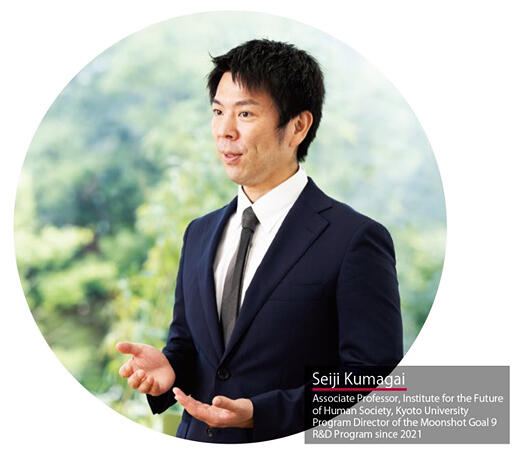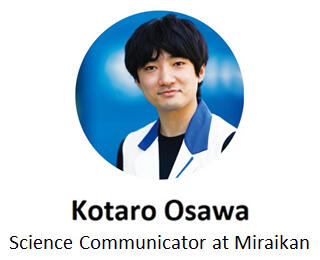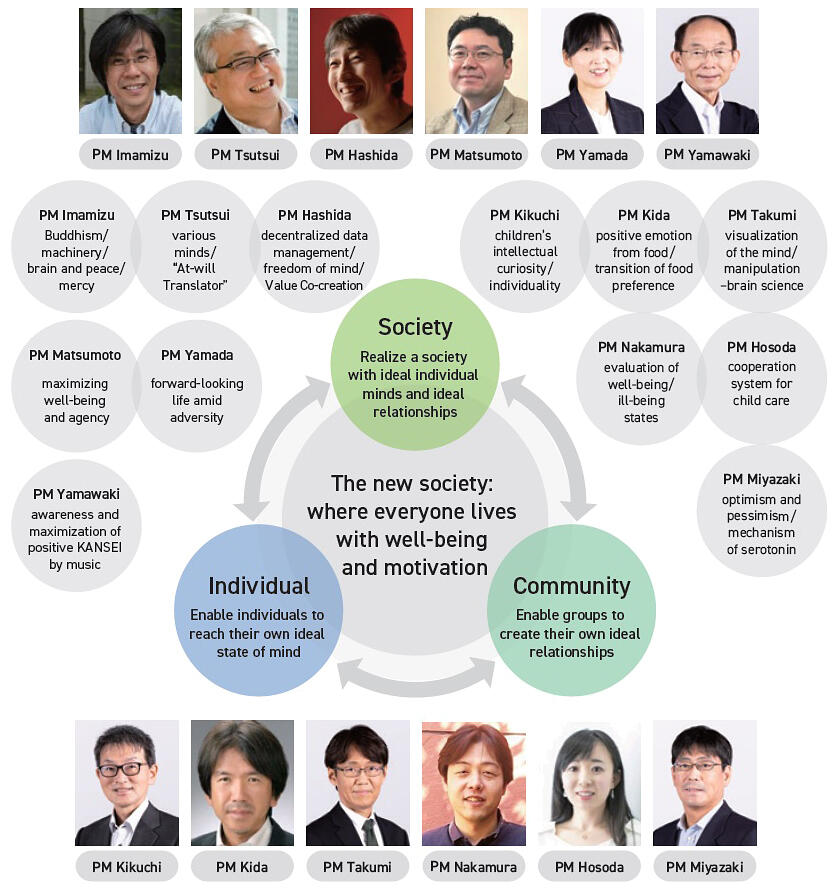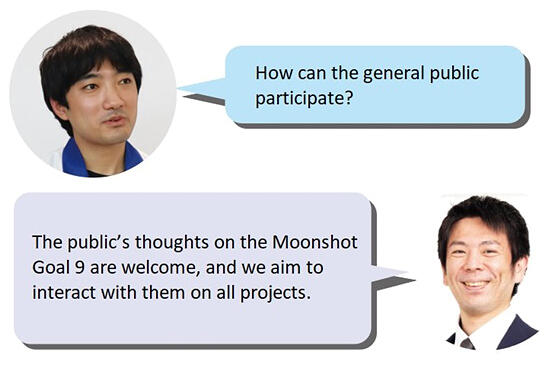This article introduces the Moonshot Goal 9: Realization of a mentally healthy and dynamic society by increasing peace of mind and vitality by 2050. This program aims to develop and implement technologies that can realize "understanding individual mental states and transitions" and "mental support in terms of interpersonal and intergroup communication". Kotaro Osawa, Science Communicator at Miraikan ‐ the National Museum of Emerging Science and Innovation, interviewed the Program Director, Associate Professor Seiji Kumagai of the Institute for the Future of Human Society, Kyoto University.


I want to contribute to more people's well‐being through science and technology
Osawa: I heard that you're a scholar of Buddhist studies.
Kumagai: That's right. My family home is a temple, and I'm an active chief priest. I decided to study Buddhism more deeply and took Buddhist studies at university, but Buddhist philosophy and thinking are so broad that I never fully understood them. A partial understanding would mean I couldn't properly contribute to society when I preached to my parishioners at the temple. So I decided to continue my research to deepen my understanding, which led me to where I am today.
Osawa: Did your desire to give back to society lead you to the Moonshot Goal 9?
Kumagai: Fundamentally, I want to contribute to society, and as a Buddhist, I want to contribute to people's happiness. But that's not easy to do. First of all, I lack the training. Also, even if I conducted research and made policy proposals based on the results, it would take time for the effects and benefits to reach people. Just as I was wondering what to do, I realized that technology might be the answer. For example, it takes a long time for monks to learn how to preach, and the number of people that can receive teaching from an individual monk is limited. However, through our BuddhaBot, an interactive artificial intelligence platform that delivers the Buddha's guidance, we have discovered a means to overcome temporal and spatial limitations and swiftly communicate numerous sutras to a large audience.
This development was made possible by working with experts in artificial intelligence. Similarly, to achieve the Moonshot Goal 9, we are aiming to collaborate with experts from various fields, including cognitive systems researchers, psychologists, and some musicians. Our approach crosses the boundaries between natural sciences, humanities, and social sciences. By "Convergence of Knowledge" and expertise from different fields, we hope to develop innovative science and technology to contribute to the well‐being of as many people as possible.
Osawa: This goal has the term 'mind' as a keyword, but what do you mean by this?
Kumagai: As a concept, it's challenging to define the mind in a unified way that everyone can agree on. It truly is multi‐dimensional. It has been defined separately in different academic disciplines, such as psychology, neuroscience, and philosophy. However, this program seeks to integrate cross‐disciplinary research to understand the mind comprehensively. By measuring it from various angles, ranging from the molecular level in the brain to neural connections and from human relationships to universal values ‐ or the macro to the micro ‐ this program aims to connect the objective and subjective aspects of the mind by integrating natural science, the humanities, and social sciences, linking physiological phenomena and values.
Osawa: I see. So rather than finding a definition for the concept of 'mind', you plan to explore it from multiple angles.
Kumagai: I want to understand it from different perspectives and visualize its state.

Creating science and technologies to transfer mental states for promoting happiness
Osawa: How does understanding the 'mind' lead to happiness for people?
Kumagai: Today's society has become more convenient and affluent, but that hasn't necessarily produced happiness. As such, our program aims to develop a science‐based happiness promotion index that will help quantify happiness through multidisciplinary research into the nature of the human mind. We will then use these indexes to develop happiness‐promoting technologies that enhance individuals' well‐being. To achieve this, we will need research to understand individual mental states, clarify the mechanisms of mental states transition, and implement and apply these technologies in society.
Osawa: Specifically, what kind of research and development will you conduct?
Kumagai: To achieve the Moonshot Goal 9, our research efforts will encompass a wide range of subjects to clarify the mechanisms of the mind and develop technologies that can transfer mental states. It will include animal models and human subjects. One example of such research is the "Integration of Asian humanities and brain informatics to enhance peace and compassion of the mind" project, which focuses on meditation and aims to understand the brain states of experienced meditators through brain informatics. Many believe that zazen meditation clears the mind, but not everyone can do it. By comparing the brainwaves of proficient meditators with those of non‐meditators, we aim to develop a technology that can transform mental states and induce a similar meditative state in individuals who may not be able to meditate on their own. Other projects include research on music and arts and the study of children's minds. Through these efforts, we use science and technology and contribute to well‐being and realize a society where people can live positively.
Osawa: The concept of technologies for transitioning mental states may be a little intimidating for some.
Kumagai: It can be frightening to imagine one's brain being manipulated to control behavior. However, we already use diverse methods to transfer our mental states. For instance, listening to music can help us relax. In the past, military songs were used to lift spirits during wartime, although I do not think this is an appropriate method of mental transition. Therefore, it is crucial to discuss with the public and society the purpose of mental state transitions, the methods that should be used, and to what extent they can be used. Achieving consensus is critical before proceeding with implementation, and the discussion itself is an essential step toward advancing social implementation.

Making individuals, groups and society happier
Osawa: Please tell us about "the mentally healthy and dynamic society" the Moonshot Goal 9 aims to create.
Kumagai: Our goal is to create a society where people can live with purpose, communicate considerately, and realize their individual and collective desires. We acknowledge that modern society faces various mental health issues, such as depression, loneliness, and conflict. Therefore, we aim to provide people with the choice to produce positive mental states and suppress negative ones using innovative technology and traditional knowledge like religion and art. Furthermore, we understand that happiness is subjective and varies from person to person. Hence, we strive to develop technologies and methods that facilitate individual preferences and support their movement toward their desired mental states, producing the aforementioned kind of society.




